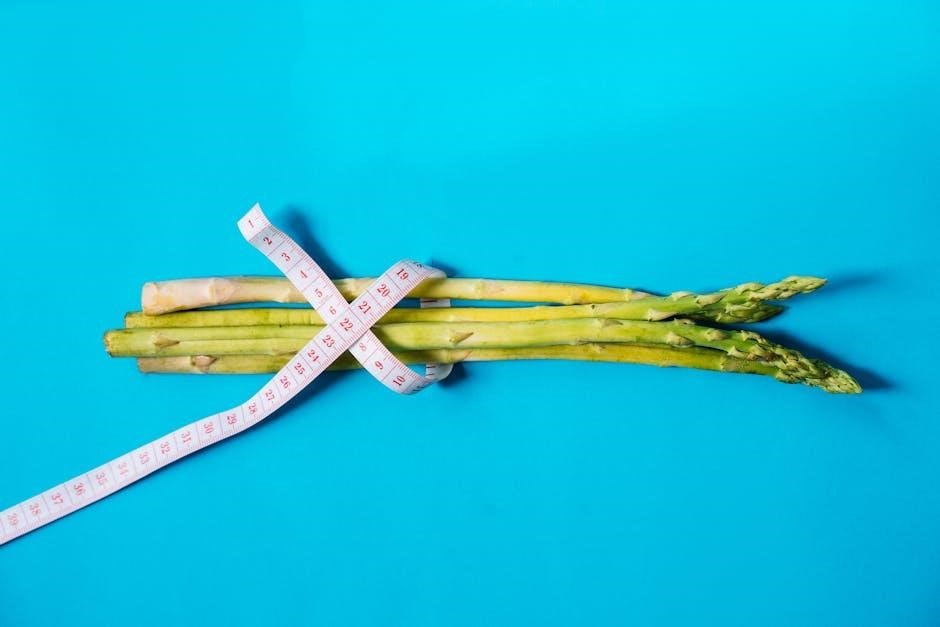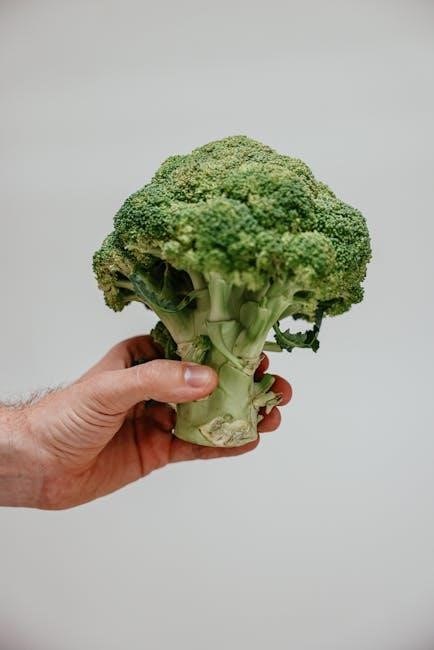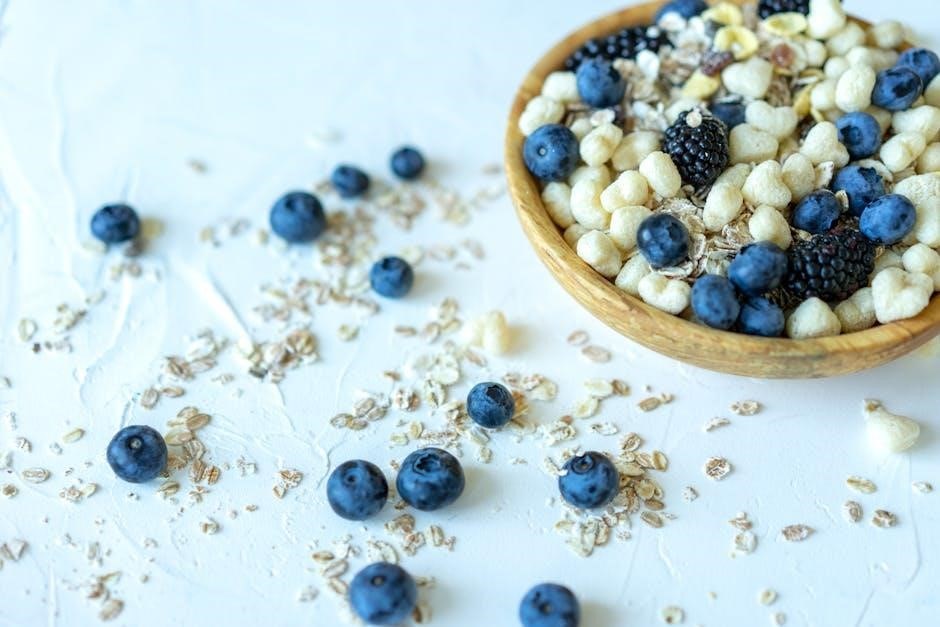Transform your body with our proven 12-week Low GI Diet plan, designed for sustainable weight loss. Focus on low glycemic index foods to stabilize blood sugar, boost health, and achieve lasting results. Download your comprehensive PDF guide now and start your journey to a healthier, slimmer you!
What is a Low GI Diet?
A low glycemic index (Low GI) diet focuses on foods that have a minimal impact on blood sugar levels. The glycemic index ranks foods on a scale from 0 to 100 based on how quickly they raise blood glucose. Low GI foods, typically below 55, cause a slower and more gradual increase in blood sugar, while high GI foods spike it rapidly. This approach helps stabilize energy levels, reduce hunger, and support weight loss by promoting smarter carbohydrate choices. It’s not about cutting carbs entirely but selecting ones that work better for your body and long-term health goals.
Benefits of a Low GI Diet for Weight Loss
A Low GI Diet offers numerous benefits for weight loss, including sustained energy levels, reduced hunger, and improved metabolic control. By stabilizing blood sugar, it prevents drastic spikes and crashes, curbing unhealthy cravings. This approach also enhances insulin sensitivity, promoting fat burning and reducing storage. Additionally, Low GI foods tend to be more filling, making portion control easier and supporting a calorie-restricted diet. Over time, this leads to steady, sustainable weight loss and improved overall health, including better blood sugar management and reduced risk of chronic diseases like heart disease and type 2 diabetes.
How the 12-Week Plan Works

The 12-week Low GI Diet plan is structured to promote steady weight loss through gradual, sustainable changes. It combines detailed weekly meal plans with portion control guidance, ensuring a balanced intake of nutrients. The plan emphasizes low glycemic index foods, tailored to stabilize blood sugar levels and reduce hunger. Each week builds on the previous one, introducing new habits and meal ideas. Physical activity is also incorporated, with recommendations for aerobic and resistance exercises. By focusing on education and mindful eating, the plan empowers users to make informed choices, leading to long-term weight management and improved overall health.

Understanding the Glycemic Index (GI)
The Glycemic Index (GI) is a scale from 0 to 100 measuring how foods affect blood sugar levels. Low GI foods promote stable blood sugar and support weight loss.
What is the Glycemic Index?
The Glycemic Index (GI) is a scale from 0 to 100 that measures how quickly foods raise blood sugar levels. Foods are ranked based on their impact on blood glucose, with pure glucose set at 100. Low GI foods, such as whole grains and vegetables, cause a gradual increase in blood sugar, while high GI foods, like white bread and sugary snacks, lead to rapid spikes. Understanding the GI helps in making informed dietary choices, particularly for weight management and blood sugar control. This concept is central to the Low GI Diet 12-Week Weight Loss Plan, which emphasizes balancing blood sugar for sustainable weight loss.
Low GI vs. High GI Foods
Low GI foods, such as whole grains, vegetables, and legumes, cause a gradual rise in blood sugar levels, providing sustained energy. High GI foods, like white bread, sugary snacks, and refined carbohydrates, lead to rapid spikes and crashes. The Low GI Diet 12-Week Weight Loss Plan focuses on incorporating low GI foods to stabilize blood sugar, reduce hunger, and promote steady weight loss. By avoiding high GI foods, individuals can better manage their appetite and energy levels, making it easier to adhere to the plan and achieve long-term success.
Importance of GI in Weight Management
The glycemic index (GI) plays a crucial role in weight management by influencing how foods affect blood sugar levels. Low GI foods promote steady energy release, reducing hunger and cravings, while high GI foods cause rapid spikes and crashes, often leading to overeating. By focusing on low GI foods, individuals can better regulate their appetite and metabolism, making it easier to maintain a healthy weight. This approach also helps prevent fat storage and supports long-term weight loss, making GI a key factor in sustainable weight management strategies.

Foods to Include in Your Low GI Diet
Incorporate whole grains, vegetables, lean proteins, and healthy fats. These foods stabilize blood sugar, provide sustained energy, and support overall health, making them ideal for a low GI diet.
Low GI Carbohydrates
Low GI carbohydrates, such as whole grains, oats, and non-starchy vegetables, are rich in fiber and nutrients. They digest slowly, preventing rapid blood sugar spikes. Incorporate foods like quinoa, barley, and legumes, which provide sustained energy and satiety. These carbs support weight loss by reducing hunger and cravings, making them ideal for a low GI diet. Pair them with protein and healthy fats for balanced meals that stabilize blood sugar and promote overall health. Focus on unprocessed, whole-food sources to maximize benefits and support your weight management goals effectively.
Protein-Rich Foods
Protein-rich foods are essential for muscle maintenance and satiety, making them a key component of the Low GI Diet. Include lean meats like chicken, turkey, and fish, as well as plant-based options such as beans, lentils, and tofu. Eggs, Greek yogurt, and cottage cheese are also excellent choices. Protein helps regulate blood sugar levels and boosts metabolism, supporting weight loss. Aim for a portion of protein at each meal to stay full longer and reduce cravings. These foods not only aid in weight management but also promote overall health and energy levels throughout the day.
Healthy Fats and Their Role
Healthy fats are crucial in a Low GI Diet, providing sustained energy and supporting overall health. Incorporate sources like avocados, nuts, seeds, and olive oil, which are rich in monounsaturated and polyunsaturated fats. These fats help reduce inflammation, improve heart health, and enhance the absorption of fat-soluble vitamins; They also contribute to satiety, making it easier to control portion sizes. By including healthy fats in your meals, you can stabilize blood sugar levels and reduce cravings for high-GI foods, supporting your weight loss goals and promoting a balanced diet.

Foods to Avoid on a Low GI Diet
Avoid high GI foods like white bread, sugary snacks, and refined carbohydrates. Limit processed foods and sugary drinks, as they cause blood sugar spikes and hinder weight loss.
High GI Foods to Limit
High GI foods, such as white bread, pastries, and sugary cereals, cause rapid blood sugar spikes. These foods are detrimental to weight loss and blood sugar control. Limit refined carbohydrates, sugary snacks, and processed foods, as they hinder progress. Opting for low GI alternatives helps maintain stable energy levels and supports long-term weight management. By reducing high GI food intake, you promote a healthier metabolism and improve overall dietary balance. This approach is crucial for achieving sustainable results in your 12-week weight loss journey.
Processed Foods and Sugary Drinks
Processed foods and sugary drinks are high in refined sugars, unhealthy fats, and empty calories, leading to rapid blood sugar spikes. These items, such as sodas, candy, and baked goods, are detrimental to weight loss and overall health. Limiting their consumption is essential for maintaining stable blood sugar levels and preventing cravings. Opt for natural alternatives like water, herbal teas, and whole foods to support your low GI diet. Avoiding processed foods and sugary drinks helps reduce calorie intake and promotes a healthier metabolism, aligning with your 12-week weight loss goals.

12-Week Meal Plan Overview
This comprehensive plan provides detailed weekly meal plans, shopping lists, and balanced nutrition to support your weight loss journey. Structured and easy to follow, it ensures steady progress.
Weekly Meal Plan Structure
The 12-week plan includes five balanced meals daily, with 1200-1600 calories tailored to your weight and activity level. Each week focuses on low GI foods, portion control, and variety to keep meals engaging; Breakfast, snacks, lunch, dinner, and desserts are carefully planned to ensure nutritional balance. Protein-rich foods, healthy fats, and low GI carbohydrates are emphasized to stabilize blood sugar and promote satiety. The structure encourages gradual changes, helping you develop sustainable eating habits. With diverse meal options, the plan prevents boredom and ensures long-term success, teaching you how to make informed food choices for a healthier lifestyle.
Caloric Intake and Portion Control
The plan recommends a daily caloric intake of 1200-1600 calories, tailored to your weight and activity level. Portion control is emphasized to ensure meals are balanced and satisfying without overeating. By focusing on low GI foods, protein, and healthy fats, the plan helps regulate hunger and energy levels. Each meal is designed to provide the right portion sizes, teaching you how to eat mindfully and make sustainable choices. This approach ensures steady weight loss while maintaining nutritional balance and overall well-being, helping you build healthy habits for the long term.

Exercise and Physical Activity
Combine the Low GI Diet with 30 minutes of daily aerobic and resistance exercises. This structured approach promotes steady weight loss, improves fitness, and supports long-term success.
Role of Exercise in Weight Loss
Exercise plays a crucial role in weight loss by burning calories, building muscle, and boosting metabolism. The 12-week Low GI Diet plan recommends 30 minutes of daily aerobic and resistance exercises to enhance fat loss and improve overall fitness. Physical activity not only supports weight management but also improves cardiovascular health and mental well-being. Combining regular exercise with a Low GI Diet creates a balanced approach to sustainable weight loss, helping you achieve a healthier, more active lifestyle. Stay consistent and watch your body transform over the 12 weeks!
Recommended Workouts for Weight Loss
The 12-week Low GI Diet plan recommends 30 minutes of daily exercise, combining aerobic and resistance training. Aerobic exercises like brisk walking, cycling, or swimming help burn fat, while resistance workouts build muscle and boost metabolism. The plan includes structured workouts tailored to your weight and activity level, ensuring steady progress. Consistency is key, as regular physical activity enhances fat loss and improves overall health. By combining these workouts with the Low GI Diet, you’ll achieve a balanced approach to weight loss, leading to a stronger, leaner, and healthier body over the 12-week period.

Monitoring Your Progress
Track your weight, measurements, and progress weekly. Adjust your plan as needed to stay on course. Regular monitoring ensures long-term success and accountability.
Tracking Weight and Measurements
Regularly tracking your weight and measurements is crucial for monitoring progress. Use a scale and tape measure weekly to assess changes. Keep a food diary to log meals and portion sizes, helping identify patterns and areas for improvement. This consistent monitoring ensures accountability and motivates adherence to the plan. By tracking progress, you can adjust your diet and exercise routine as needed to maintain steady weight loss. Over time, this data will reveal trends, helping you refine your approach for long-term success on the Low GI Diet 12-week weight loss plan.
Adjusting the Plan as Needed
As you progress through the 12-week Low GI Diet plan, flexibility is key. Monitor your weight loss and adjust portions or food choices if progress stalls. If hunger persists, increase protein or healthy fats. Conversely, reduce caloric intake slightly if weight loss slows. Stay hydrated and ensure meals are balanced. Regularly review your food diary to identify patterns and make necessary tweaks. Adjusting the plan based on your body’s response ensures sustained progress and long-term success. Remember, consistency is crucial, but so is listening to your body and adapting as needed for optimal results.

Sustainability and Long-Term Success
The 12-week Low GI Diet plan fosters a sustainable lifestyle by transforming eating habits, promoting informed food choices, and ensuring a balanced diet for long-term weight management success.
Maintaining a Healthy Lifestyle
Maintaining a healthy lifestyle beyond the 12-week plan involves adopting sustainable habits. The Low GI Diet encourages gradual, long-term changes, helping you make informed food choices that balance blood sugar and support weight management. By focusing on nutrient-rich, low GI foods, you foster a healthier relationship with eating. Regular physical activity, mindful portion control, and staying hydrated are also key. This approach ensures that weight loss is not just temporary but part of an ongoing commitment to well-being. The plan equips you with the tools to maintain a balanced diet and active lifestyle for years to come, promoting overall health and vitality.
Preventing Weight Regain
Preventing weight regain after the 12-week plan requires a commitment to sustainable habits. The Low GI Diet helps maintain weight loss by stabilizing blood sugar levels and reducing hunger. By continuing to prioritize low GI foods, you avoid drastic fluctuations in blood glucose, which can lead to overeating. Regular physical activity, mindful portion control, and staying hydrated are also crucial. The plan’s structured approach ensures long-term success by teaching you how to make healthier choices. Over time, these habits become second nature, helping you maintain your weight loss and enjoy a healthier, more balanced lifestyle without feeling deprived.
Congratulations on completing your 12-week Low GI Diet journey! Embrace sustainable weight loss, improved health, and long-term success. Download your PDF guide now and start transforming your life today!

Final Tips for Success
Stay committed to your Low GI Diet plan and celebrate small victories. Plan meals in advance to avoid setbacks. Keep track of your progress and adjust portions as needed. Stay hydrated, prioritize sleep, and incorporate physical activity for optimal results. Focus on sustainable lifestyle changes rather than quick fixes. Download your Low GI Diet 12-Week Weight Loss Plan PDF for detailed guidance and delicious recipes. Maintain a positive mindset and remember, consistency is key to achieving your weight loss goals and improving overall health.
Download Your Low GI Diet 12-Week Weight Loss Plan PDF
Ready to begin your weight loss journey? Download the Low GI Diet 12-Week Weight Loss Plan PDF for a comprehensive guide to transforming your body. This detailed plan includes weekly meal plans, shopping lists, and expert tips to help you stay on track. With a focus on low glycemic index foods, this PDF provides everything you need to stabilize blood sugar, boost energy, and achieve sustainable weight loss. It’s a roadmap to a healthier lifestyle, ensuring you make informed food choices and maintain long-term success. Download your PDF now and start your path to a slimmer, healthier you!
